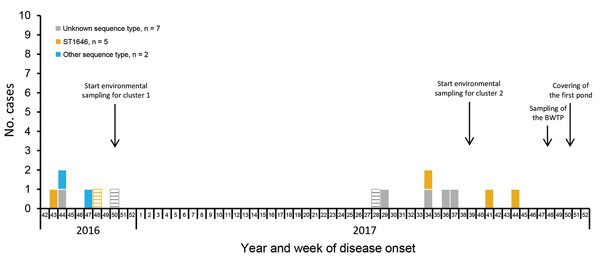Volume 24, Number 10—October 2018
Dispatch
Two Community Clusters of Legionnaires’ Disease Directly Linked to a Biologic Wastewater Treatment Plant, the Netherlands
Figure 1

Figure 1. Legionnaires’ disease cases, by sequence type and week of disease onset, Boxtel, the Netherlands, October 2016–December 2017. BWTP, biologic wastewater treatment plant; ST, sequence type.
Page created: September 16, 2018
Page updated: September 16, 2018
Page reviewed: September 16, 2018
The conclusions, findings, and opinions expressed by authors contributing to this journal do not necessarily reflect the official position of the U.S. Department of Health and Human Services, the Public Health Service, the Centers for Disease Control and Prevention, or the authors' affiliated institutions. Use of trade names is for identification only and does not imply endorsement by any of the groups named above.